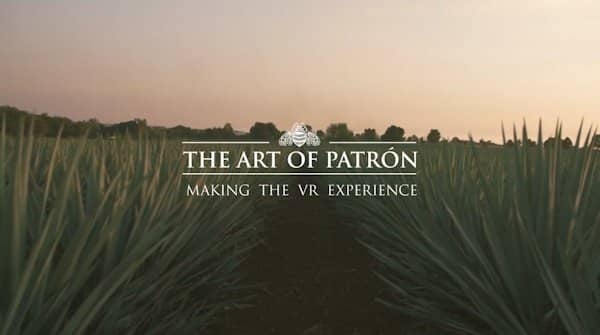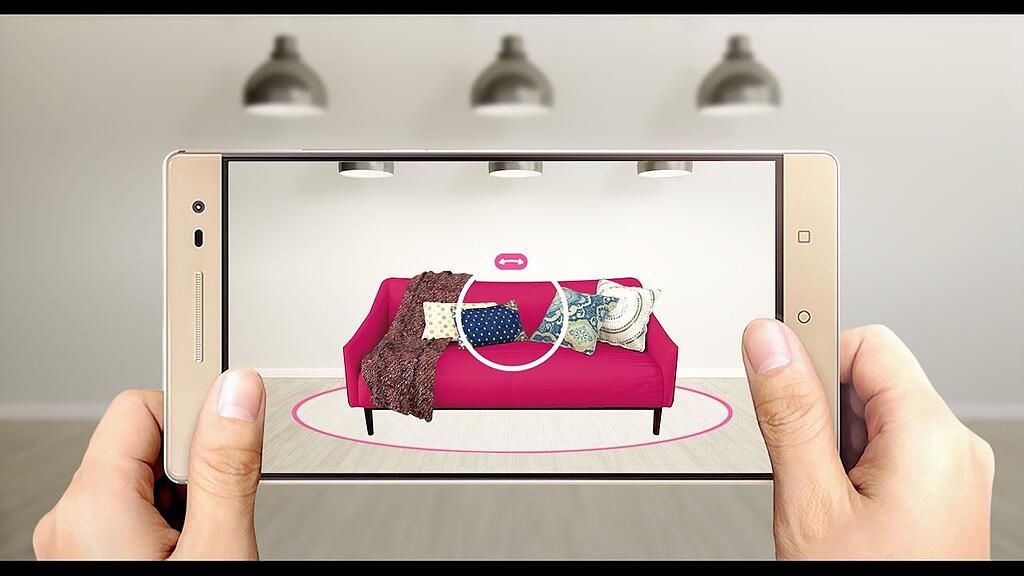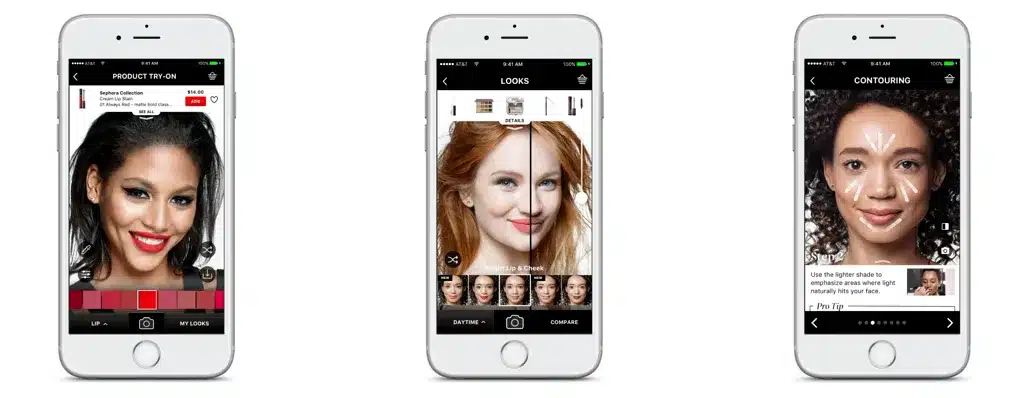VR in ecommerce: How to offer a virtual reality shopping experience
Virtual Reality (VR) is a hot topic at the moment, but is it a technology worth investing in if you’re an online retailer?
We’re going to take a look at how VR and Augmented Reality are shaping the future of eCommerce and more importantly how you can offer a virtual reality shopping experience.
Virtual Reality (VR) is becoming increasingly important as a marketing tool for businesses. It might sound futuristic and a bit of a novelty, but VR is making quite an impact and proving itself a valuable asset, particularly in elements of marketing such as customer service and live events.
VR is steadily becoming more mainstream, and in 2018, 24 million virtual reality and augmented reality devices were sold.
Now while the more powerful devices like Oculus Rift remain just out of reach for most of us, there are more wallet-friendly options on the market, like Google Cardboard.
This means VR is becoming a more accessible technology that could soon gain mass market appeal – so it isn’t just a fad, VR is something that’s really taking off and should be seriously considered by online sellers.
Why should online sellers care about VR?
The natures of VR and eCommerce go hand in hand – they’re both essentially real-world experiences that have been digitally replicated. The two compliment each other well, which means as an eCommerce retailer you could see some major benefits in using VR as a marketing device.
In fact, many online sellers are already successfully using VR as part of their integrated marketing strategies. In an age where content is praised as one of the driving forces behind lead generation, VR is a sure-fire way of creating memorable customer experiences that really stick.
This goes a long way in cementing yourself in the minds of customers and getting people to talk about your brand.
Think about it:what’s more engaging, reading a product description of a dress, or virtually trying on that dress in different colors and with different accessories? It’s a no-brainer.
eCommerce retailers should take note: VR could redefine the shopping experience, allowing you to create immersive experiences that re-enact the physical shopping journey, but from the customer’s own home – or from anywhere. This has the potential to completely change the way we shop, and online sellers should start planning for the VR revolution before they get left behind.
What are the benefits of VR for businesses?
- VR can create rich, immersive and – most importantly – memorable customer experiences. This can do wonders for conversion rates.
- It’s a social media goldmine, which is fantastic for brand awareness. VR is an experience, and a share-worthy one at that – it gets customers talking about you and sharing their experiences on social media.
- 360 degree product views. Trying something in VR is the next best thing to physically holding a product. It gives the user a much better perspective of what they’re buying as it allows them to see it from all possible angles.
- Breaking down language barriers. If a picture is worth a thousand words, VR must be worth a million. It’s much easier to demonstrate a product’s worth by showing rather than telling, and this can be extra helpful in demoing complex products, especially to someone who speaks a different language to you.
How can you use Virtual Reality in eCommerce?
As we’ve already mentioned, virtual reality is starting to gain more traction as a marketing tool. We’re going to look at the ways you can get the most out of VR as an eCommerce retailer, how you can offer your customer’s a virtual reality shopping experience, and how other brands are already reaping the rewards VR has to offer.
Telling your product’s story
Nothing is original anymore. There, we said it. But don’t let that put a dampener on your product – you can still make it stand out. Sure, there might be a hundred other products like it, but do they have the same emotional, engaging backstory? No they don’t. This is how you differentiate your product – by selling the story behind it.
You need to create a compelling story that appeals to your audience. Doing this will get them to engage with your brand in an emotional way, allowing you to connect with them on a much deeper level than if you were simply giving your product the hard sell.
This storytelling approach to marketing has been proven to help increase conversion rates, and VR is an excellent tool for providing a rich, immersive storytelling experience.
Let’s say you hand-make natural beauty products. You could use VR to give a full 360 degree showcase of how you ethically source each individual ingredients. You could take your customers on a journey from the local beekeeper where you source the honey in your face masks, to the Fair Trade shea butter farm in Ghana where the employees are paid a living wage, to the product manufacturing site where you test the ingredients on volunteers and not animals. Your customers can experience all of this instead of simply reading about it, all through the magic of VR.
Patrón Tequila used VR to take their audience on a journey through their product’s evolution, from agave plant to cocktail party. The premium tequila brand used a combination of live action video and 3D graphics to deliver “The Art of Patrón Virtual Reality Experience” at live events, retail locations, and on the Art of Patrón website. The VR experience gave Patrón’s audience a virtual tour of its distillery in Jalisco, Mexico, allowing them a glimpse into the hard work it takes to deliver a high quality beverage.

The VR experience took six months to make, but the 20,0000 YouTube views it accumulated shows just how powerful this kind of immersive storytelling experience can be for marketing.
Improving customer service
93% of customers are more likely to do business with you again if they’re satisfied with the way you resolve an issue. This makes customer complaint calls an excellent opportunity to prove your worth and maintain the loyalty of your existing customers: they know that if they come to you with a problem you can fix it, and all the better if you do it quickly.
Troubleshooting customer issues has often been a problem for support staff who heavily rely on customers’ descriptions of issues.
This can be frustrating for both parties: the customer may have a poor understanding of the problem in the first place, making it hard for them to give the support staff all the correct information needed to resolve the issue; and the support staff then have to rely on a poor description to get to the bottom of the issue.
Support staff are less likely to solve the problem if they have a poor visualization of it, leading to further frustration from the customer.
This creates a vicious cycle where the customer is unsatisfied because their problem has taken a long time to solve, and the business takes a hit by having to repair the trust they’ve lost by failing to fix the issue.
Customer support teams can take advantage of the full 360 degree perspective that VR offers to help ease the frustration for both customers and team members.
Having this kind of visual aid could help customers provide a more effective explanation of the problem, and could also work the other way, allowing the support staff to show the customer exactly what they are doing to resolve the issue.
This can also be a great learning opportunity, allowing the customer to see exactly how to fix the problem themself, reducing the likelihood of them calling again with the same issue.
The approach can be applied to anything from a problem as simple as turning a router off and on again, to something more complex like re-installing an operating system.
This makes for a much better customer experience – the customer doesn’t have to awkwardly describe the issue, and the support assistant can fix the problem quicker, so both parties are satisfied with the result. This could mean less customers frustratedly trying to fix issues and less stressed support staff on the receiving end of angry customer calls.
Fidelity Investments is one example of a company that is testing VR for customer service. It is using VR to train customer support reps in call centers across the U.S with the vision of making it easier for employees to empathize with customers.
Fidelity hopes that relaying complex financial information in the form of VR will help people better understand their investments so they can make better decisions. Having this visual representation could give customers a better grasp on a complex topic by helping them digest the information more easily.
Product testing
Customers have an innate desire to try before they buy, with 58% more likely to purchase a product after they’ve been given the opportunity to test it first.
Providing a 360 degree view of a product lets customers see it from all angles and can help store owners bridge the gap between physical and online retail. While there are applications out there that can give your website a 360 degree product view, seeing a product on screen doesn’t quite compete with virtually testing the product.
There are plenty of eCommerce retailers already taking advantage of Virtual Reality, or in this case Augmented Reality, to let customers virtually try their products without physically visiting a store, or waiting days for a sample to arrive in the post.
Augmented Reality can be looked at as a form of Virtual Reality, where the real world is enhanced through virtual elements. Augmented Reality specifically refers to technology that superimposes a computer-generated image onto a users view of the real world.
An example of this is iStaging‘s app, which lets users see what their home would look like with new products in it.

The app overlays new furniture in actual size into the rooms of a user’s house by using their smartphone camera, giving them a realistic idea of what looks good and what doesn’t. All users need is a smartphone and a simple VR headset (like Google Cardboard) for the app to work.
Another great example of a retailer using Augmented Reality to personalize their customer’s shopping experience is beauty brand Sephora. Sephora’s Virtual Artist app uses virtual reality technology to deliver a personalized shopping experience, enabling the user to try different make up looks before making a purchase. In addition to this, users can also learn how to do their make up with virtual tutorials.

This not only enhances the entire customer experience, but more importantly increases the chance of conversions, all the while reducing refunds – win, win!
This improvement on the user experience makes it easier for existing and potential customers to find and try products sold online. This real-time immersive user experience can lead to higher conversion rates across industries. The the average conversion rate in eCommerce sits at 2.35% and VR could help give this a healthy boost.
This tech also opens up new possibilities for cross-selling, upselling and tracking customer behavior patterns because it allows consumers to walk through a virtual store rather than restricting them to a static product page. Tracking their movements could give some excellent insights into customer preferences and could help make your marketing more personalized.
Live events
The biggest problem with live events is getting people to attend them. Don’t get us wrong, we’re not saying that your events aren’t worthy of attendance; what we mean is that not everyone has the ability to attend them, whether it’s because they don’t live in close proximity to your event or because they’re physically unable to make it.
The fantastic thing about VR is that it can bring the event to your audience instead of vice versa. Incorporating a VR element into your live events can widen your audience by reaching those who may want to go to your event but can’t be there in person.
Additionally, everyone can get a front row seat to your event – literally. VR lets everyone sit in the front row, so no one is left sitting at the back craning their neck trying to make out the finer details of whatever is being showcased. This can go a long way in improving your guests’ experience at your event, giving them a more positive perception of your brand.
Let’s look at New York Fashion Week as an example. While the show itself was in New York city, guests were given the chance to virtually attend a show that took place in Milan a week earlier by using a VR headset. This featured 360 degree videos of exclusive fashion collections and gave users a red carpet experience.
The beauty of this technology means you won’t even need to go to the expense of running a physical event if you don’t want to – you could do it all in VR. Running a completely virtual event can minimize your costs and maximize your audience to give your brand greater exposure.
Conclusion to eCommerce VR
Virtual Reality is part of a growing number of technologies that help solve the fundamental challenge in eCommerce: recreating the physical and emotional feeling of brick-and-mortar online.
Thanks to more cost effective solutions, like Google Cardboard, that can turn smartphones into headsets, and with the price of high-end devices like Oculus Rift gradually becoming more affordable, we can expect to see full VR begin to make more changes to the landscape of eCommerce within the next few years. Will you be ready to incorporate VR into your marketing strategy, or will you be left playing catch up?